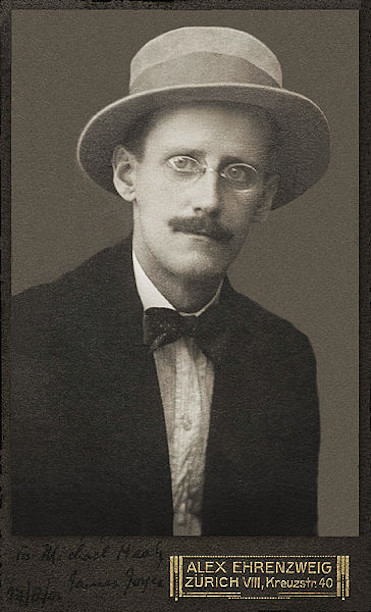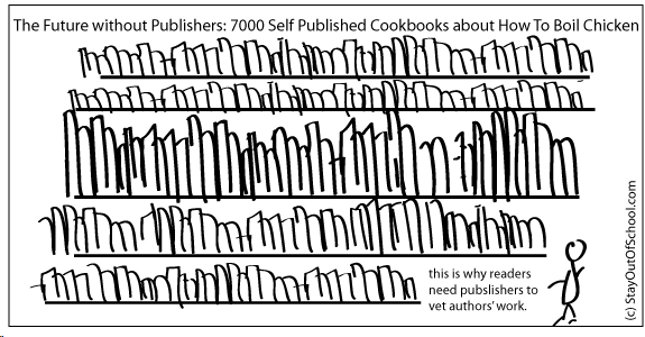Despite Growing Trend, Publishing Experts Still Frown Upon Self-Published Books

On any given night in America, bands without record label contracts play small clubs and sell self-released CDs, many of which were recorded using Garageband or other such programs. On the streets by Union Square in New York City, you can see young rappers hawking self-produced CDs on the street for $10 a disk. Nobody in the music business – where the DIY mentality has been a part of record lore for decades -- thinks they’re ruining the record industry or popular music.
So much changes, however, if an author self-publishes a book: The response from other writers and publishers is often disdain toward self-published and vanity press books. In part, this has to do, no doubt, with the seemingly diminishing pool of readers and the increasing number of writers in the market. It also has to do with the sense that such self-published books haven’t been “vetted” as one poet put it. The sense among many writers and readers is that, thanks to the boom in small presses, there are plenty of venues for good books to get out there. Regardless of one’s opinion about self-published books, such titles are a growing share of the literary marketplace.
After having helped a friend go through the process, Rosanne Cohen Jessen says that self-publishing “is very difficult, and costly. It is also very tough to get your books into larger stores because they usually have deals with publishers. I just went through this, and I have to say even though you will make pennies on the dollar with a publisher, you have a much better chance of getting your work ‘out there’ and nationally/internationally, if that is your goal.”
In other words, self-published books seem to many in the writing, publishing and book-selling worlds, illegitimate. Furthermore, the fact that many writers vie for status within the publish-or-perish world of the academy, and competing for state and national arts council fellowships (none of which accept self-published works as a legitimate publication in their eligibility requirements for promotion, tenure or grant money).
There are dissenters, however, particularly in regards to the issue of legitimacy. Poet, fiction writer and editor at Smalls Press, George Guida, puts it this way, “…The distinction for me between legitimate and illegitimate publishing lies in the editorial process. If an independent author or cozy publisher puts the author (himself or other) through a rigorous editorial process, then the publication is legitimate. So much ‘legitimate’ work is remarkably mediocre and unoriginal.”
Legitimacy, though, comes in many forms. Advocates of self-publishing can rattle off names of writers now in the canon who self-published at least one book, including Walt Whitman, James Joyce, and Gertrude Stein. Success in the form of sales and movie deals for self-published authors also adds a sense of legitimacy to the trend. According to PJ Media, “Wool — a wildly popular, dystopian sci-fi novel — was purchased for feature-film development by director Ridley Scott and 20th Century Fox after a fierce Hollywood bidding war.... Author Hugh Howey released it himself, as a series of cheap, self-published ebooks.”

Mobileread – a Web forum for self-published authors – maintains a list of 108 self-published authors with more than 50,000 books sold. USA Today reported that “15 self-published authors ... cracked the top 150 on USA Today’s Best-Selling Books list” in 2011. Most of these titles were ebooks, which are inexpensive to produce, inexpensive to buy, and able to be read on a variety of formats from ereaders to tablets, laptops to mobile phones. Sales are quickly processed – readers don’t have to go to a bookstore or wait for a paperback to arrive in the mail. Ebooks, in other words, have been a boon to the self-publishing craze.
Of course, not all readers like to read on a screen; print-on-demand technologies have progressed to allow bookstores and libraries to have printer/binders in-house. According to a recent Wall Street Journal article about one such machine being installed at the Brooklyn Public Library, “In a borough of writers and immigrants, the book machine ... offers what the library's holdings can't: titles in any language and a chance to publish your own.”
Tattered Cover Book Store in Denver also installed such a machine, which allows for the work of self-published authors, many of them locals, to be sold in-house without keeping stock on the shelves. The authors meet with a spectrum of success. Katie Schmidt, the local author coordinator at the store, says that there are two different types of self-publishing authors: The first take the business of publishing their work as seriously as they take the writing – the work is edited and copy edited; the book’s well designed with a thought to layout, font, etc; and the author has a plan to sell the book. The second just want the book published, and haven’t thought through anything beyond the manuscript. Schmidt advises: “If you want to write so that you can hold a book of your own making in your hands, go for it and enjoy. If you want to write so that you can sell a book to the public, be prepared to start a new business the moment you are finished writing, because selling your book will require all the investment of time, money, energy, and resources that any other business requires, and more.”

Looking through a stack of self-published books shows this to be true. Some books have no title pages, lack fresh page starts for new chapters, and are riddled with typos, while others were designed with care – complete with end papers and easy-to-read margins and gutters. The product is the problem, in other words. There’s a difference between producing a book and producing a book well.
Or perhaps the problem is in how the authors talk about the books. Many self-published authors say their works are published, not self-published, thus suggesting the kind of vetting mentioned above. Poet Pia Taavila says she wants her work “peer reviewed before it appears in print,” and although nothing prevents a group of peers from reviewing that work, there’s something missing -- something that many self-published authors seem to hint at when they fail to say they “self-published” a book as opposed to “published” a book. (There’s a subtle difference, but one that suggests that other people had faith in their words.)
Adam Deutsch, editor and publisher of Cooper Dillon books says, “I can't bring myself to put my own poems on Cooper Dillon. I would love to have a publisher in my corner, also believing in the work.”
Sales do a lot to make an author feel someone is in his/her corner. But when sales fail, what else do self-published authors have? Thanks to ebooks and print on demand, they may no longer have boxes of books stacked in their basements as they may have 30 years ago.
The recent rash of self-publishing success stories capture the spirit of the American Dream, in which anybody can be successful with entrepreneurship and a good idea – rags-to-riches stories in which the little guy, forgotten by corporate publishers succeeds on his own skill and perseverance. There are plenty of websites out there, too, willing to help an author take this route. But for every great success, there are plenty of authors whose book doesn’t sell 50,000 copies, but only 50 copies. For many of these authors, however, to have even 50 people who would have otherwise never have heard of them read their work, may seem like a success.
Author Bio:
Gerry LaFemina, a contributing writer at Highbrow Magazine, is the author of a book of stories (Wish List), two books of prose poems, and six books of poems, including Vanishing Horizon (2011, Anhinga Press). He directs the Frostburg Center for Creative Writing at Frostburg State University. He divides his time between Maryland and New York.
For Highbrow Magazine
Photos: Mohamed M. Hassan (PublicDomainPictures, Creative Commons); James Joyce (Wikipedia Commons); second cartoon (stayoutofschool.com).






























































































































































































































































































































